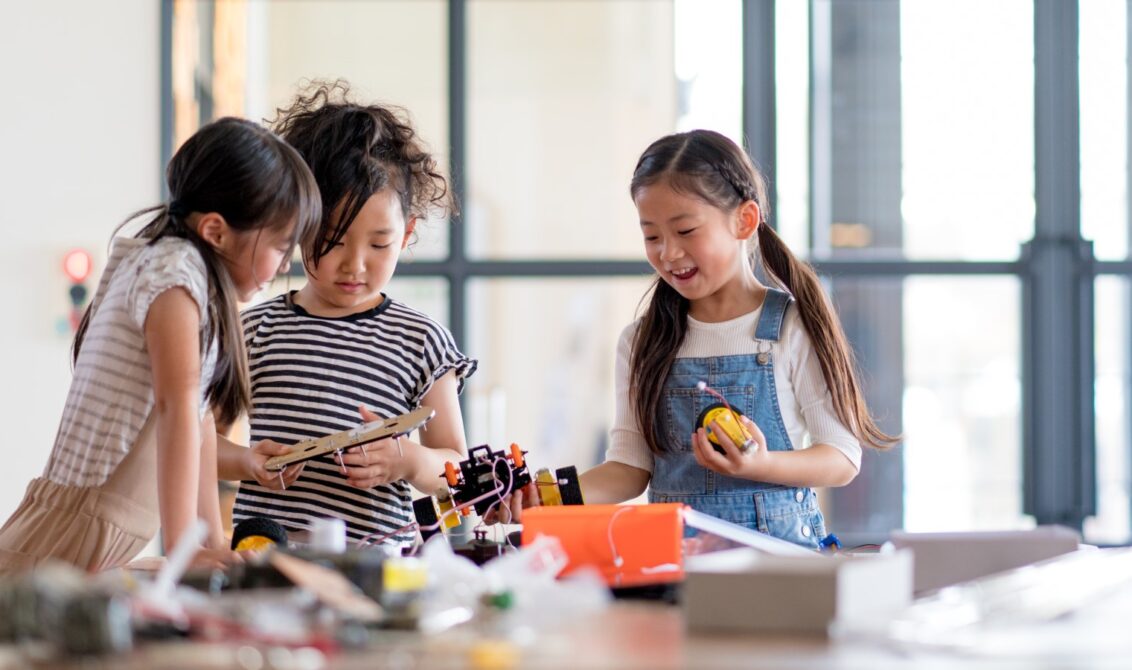
One of the major challenges for teachers and school leaders is how to meet the challenge of the Computing curriculum, especially at Primary and Lower Secondary and provide a rounded, thought provoking and engaging curriculum for students to help prepare them for the world ahead and inspire more to take computing-based courses at Key Stage 4 and beyond.
One thing to remember about any Computing curriculum is that it is a living and more importantly, evolving piece of work. Many subjects are static by their nature, the ways of delivering it may change but the subject matter may not. The current UK Computing curriculum was written in 2013 with a focus on computer science, digital media and the responsible use of computers. Our interpretation of these topics is linked directly to technological advances, government initiatives and most importantly how computing infrastructure is becoming integrated with every aspect of our lives.
With this in mind I would like to outline a few ideas on how to look at this challenge, many of which I tried out myself as a computing teacher.
What’s it like in there?
Ask a computing class what it looks like inside a desktop computer and replies will range from “lots of wires” to “chips” and very occasionally you will find a student who’s older sibling or relative has built their own computer and they got to take a look. Removing the mystery about technology is key at any age and every computing classroom I was in had a large box of unwanted computer components. These are great for handing around the class and discussing their purpose. Ask your network manager and I guarantee they will have a box of motherboards, memory and hard drives they just couldn’t throw away!
A really useful demonstration is to collect enough parts and cables to actually build a PC in front of the class, getting students involved in connecting them together. Maybe connecting the power isn’t a great idea (!) but the discussion it generates feeds into every computer system, from a smartphone to a games console – they all have the same parts.
Programming an unbreakable computer
The Raspberry Pi is a $35 computer (there are similar products out there) but I’ve found this one to have the most online support and so many ideas for its use. Classroom computers are essential to the infrastructure of any school and no network manager will allow you to take ten computers, reinstall the operating system and try out applications written by students if there is any risk of causing system damage. A set of 10 Raspberry Pi computers costs the same as one commercial desktop and it is really hard to break it. Mess up the operating system? Simply wipe and start again. Write a program that deletes everything on the computer? Just wipe and start again. Products like this are a great way to move beyond theory and really get students involved.
Every school has technology experts
I’m sure every Computing teacher knows this but get to know your network managers, their team and the work they do. They are solving computing problems, testing new hardware and writing their own programs every day. You might be surprised that many will actually quite like the opportunity to talk to a class about the school computer system and the network behind it.
“I have no interest or see the use in computing!”
This was often a phrase I would hear at Key Stage 3. A great place to start with students not really seeing the relevance of computing is their own day. From the moment they wake up and check a device, ask a device for music or the weather, use a contactless card, pay for a school lunch using a fingerprint, send an instant message, watch a homework video, play an online game or order takeaway – every one of these has a story behind it and relatable to the Computing curriculum objectives. By designing projects that feel relatable and have context, lessons become more about life skills than theory.
There is so much good stuff out there
One thing lockdown reminded teachers of (besides the fact that working from home isn’t as idyllic as it sounds!) is that there are so many good quality resources out there to support the Computing curriculum. The trick is to look for the good stuff and choose for your audience. Want to know about the Internet? Code.org has some great videos featuring the guy who help invent it. Taking about cybersecurity? Avoid poorly animated YouTube video with a computer-generated voiceover and show part of a BBC hacking film or a slickly produced short film by IBM about the dangers of getting hacked at work.
Building up a library of short, well produced videos and resources that can be dropped into any lesson to break things up will remind students they are looking at real world issues, not just teachers talking over a presentation written for other teachers.
This is not just classroom theory, these are life skills
Think about the dangers to young people today: cyberbullying, scams, fake news and social media incidents that can lead to physical danger in the real world. All of these can be explored in the Computing curriculum and by understanding the technology behind them, the tools people use and what to look for, is a benefit those of us hitting middle-age never had. Being able to spot and avoid problems allows students to enjoy the many benefits computing has and maybe inspire them to think of it as a genuine career choice.
Inspiring independence
One thing I’ve always believed about the Computing curriculum, more than any other subject, is that it can inspire independence. A student today, with the right skills can use them to learn about any other subject. By being able to search out and make a judgement on what they find they can be truly independent learners.
Futher reading
Find out more about Pearson Edexcel Computing courses for learners aged 4-16 on our website.
Sign up to receive our blog updates
Like what you read and want to receive more articles like this direct to your inbox? Subscribe to our blog and we’ll send you a fortnightly digest of the blog posts you may have missed, plus links to free resources to support your teaching and learning.

